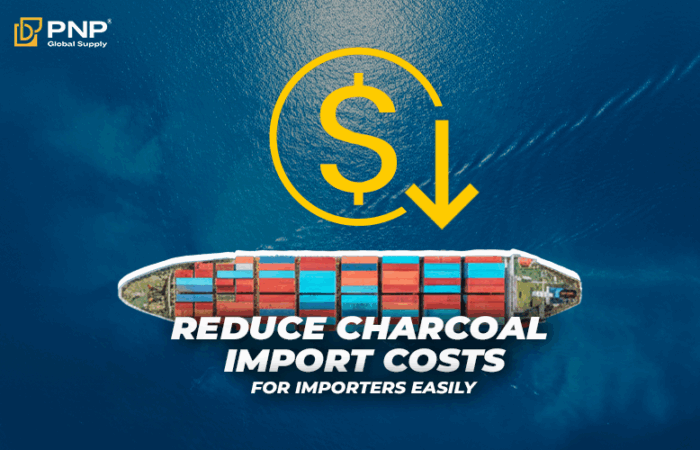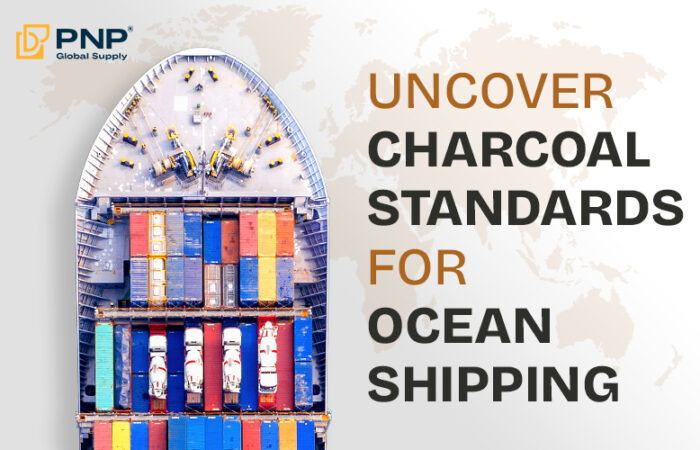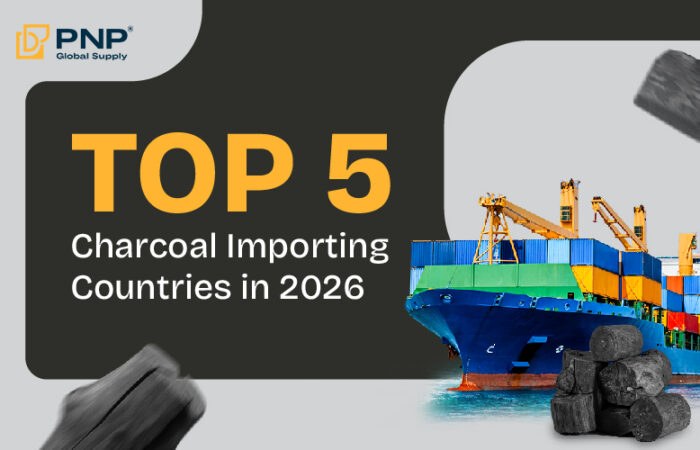Shipping charcoal might sound simple, but in reality, it’s a delicate process that demands strict safety and quality control. Charcoal is classified as a dangerous good because of its flammable nature and high sensitivity to moisture. Whether you’re shipping charcoal in bulk or packing it for retail, maintaining proper temperature and humidity inside the container is crucial to prevent spontaneous combustion or product degradation. This is where thermal liners and desiccant packs play an essential role in ensuring safe and efficient charcoal delivery.
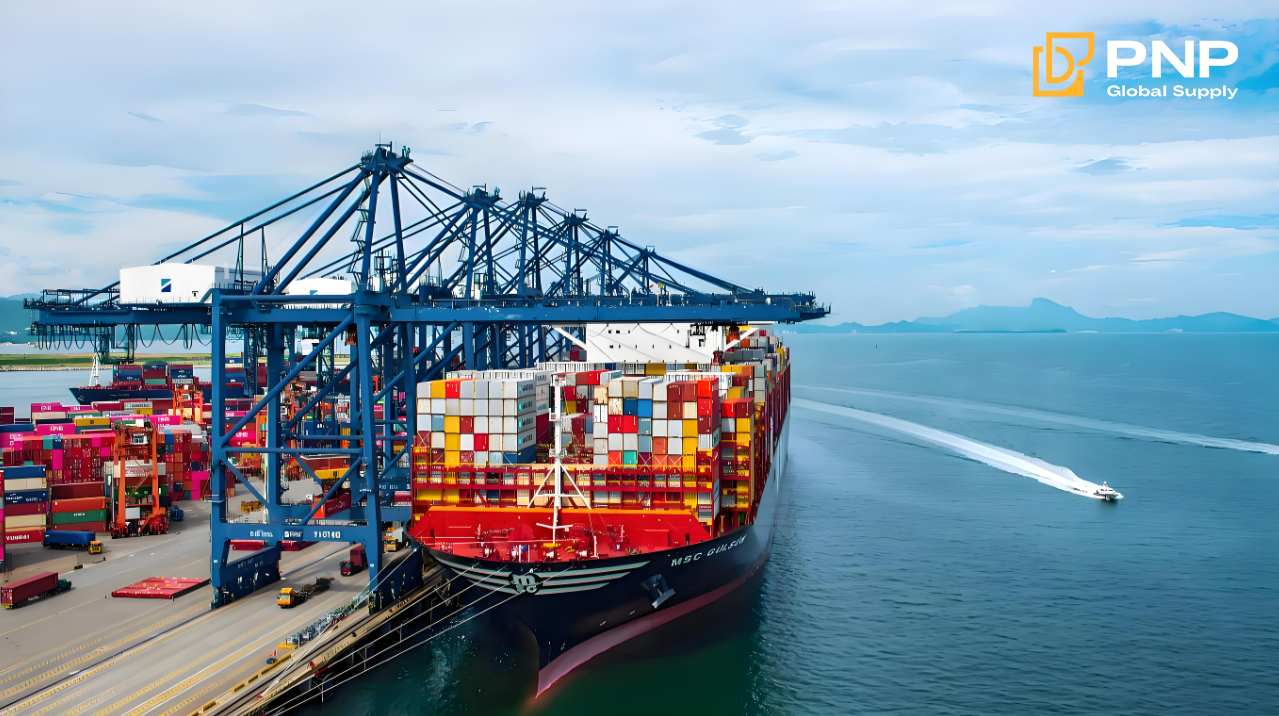
Understanding the Nature of Charcoal and Its Shipping Risks
Charcoal is a carbon-rich material that continues to react with its environment even after production. When stored in sealed spaces such as containers, it can absorb moisture from the air and generate heat internally. If the container experiences extreme temperature fluctuations, condensation may occur, which can trigger self-heating and increase the risk of fire. These characteristics make shipping charcoal a sensitive operation that falls under international dangerous goods shipping regulations.
Without the right preventive measures, a container filled with charcoal can quickly turn into a fire hazard — both during sea transport and while stored at ports.
What Is a Thermal Liner and How It Works
A thermal liner is a reflective insulation layer installed inside a shipping container to create a temperature-controlled environment. These liners are made from aluminum foil laminated with polyethylene or woven fabric, which acts as a barrier to heat radiation, moisture, and condensation. When used in container liners, they form a protective shell around the charcoal cargo, maintaining a stable climate throughout the journey.
Key functions of thermal liners include:
- Reflecting up to 97% of radiant heat to keep container temperature consistent.
- Preventing condensation caused by sudden changes between day and night temperature.
- Reducing external heat transfer, especially during long voyages through tropical regions.
For charcoal delivery, using thermal liners means the product remains dry, cool, and safe — even during extended storage or shipment across different climate zones.
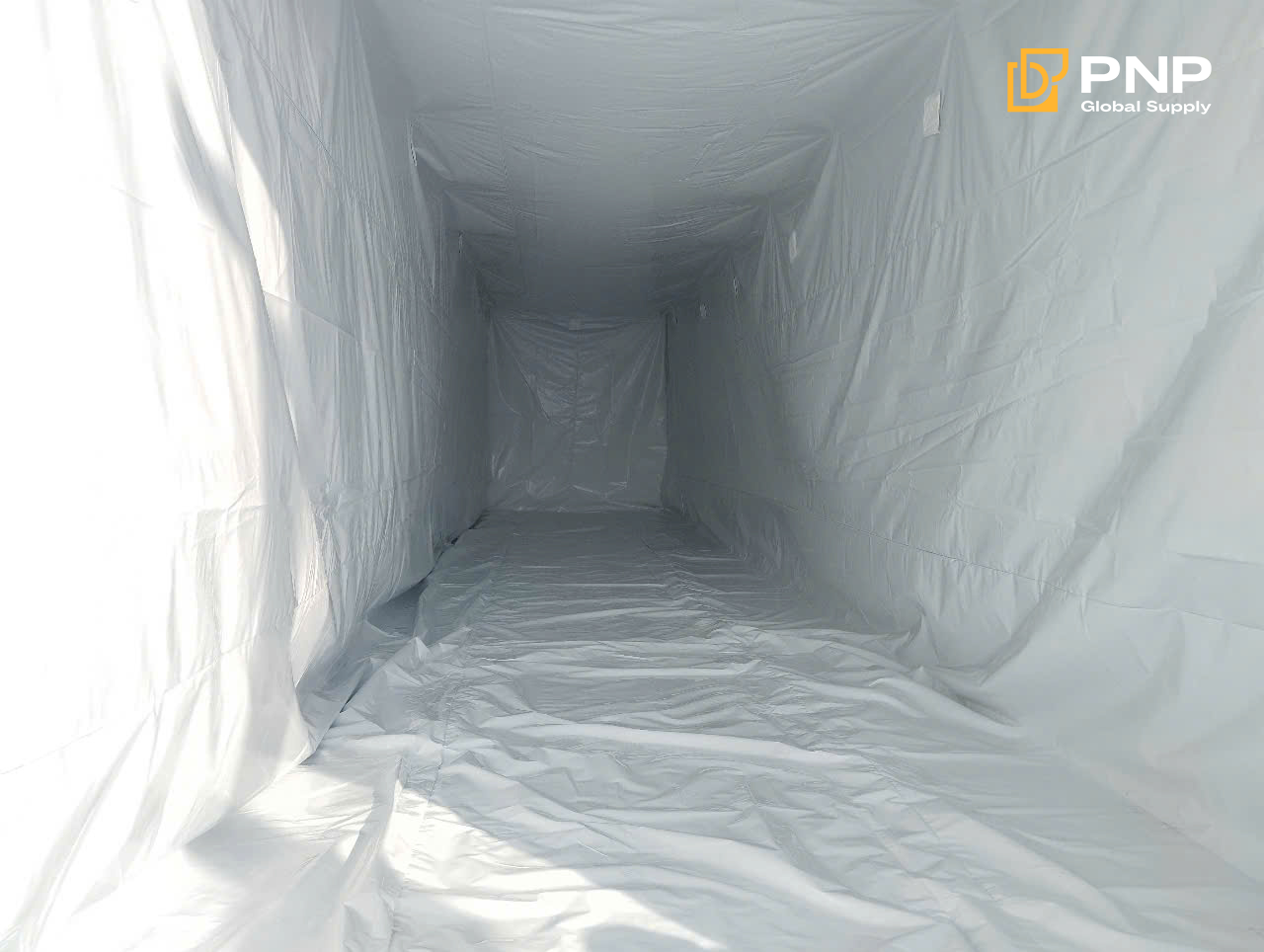
The Importance of Moisture Control in Charcoal Containers
Charcoal’s porous nature makes it extremely vulnerable to moisture. When humidity enters the container, the charcoal can absorb it, leading to several negative effects:
- Reduced calorific value and burning efficiency.
- Increased weight, which affects transport cost.
- Surface mold, cracking, and foul odor.
- Higher risk of self-heating due to trapped moisture reacting with residual carbon.
That’s why desiccant packs are an equally important part of the packaging setup. These moisture absorbers help capture humidity inside the container, preventing condensation from forming on the cargo or container walls. When combined with a thermal liner, they create a dual-protection system: the liner prevents external temperature changes, and the desiccant packs control internal humidity levels.
In short, proper moisture management is not optional — it’s essential to keep charcoal in bulk safe and market-ready.
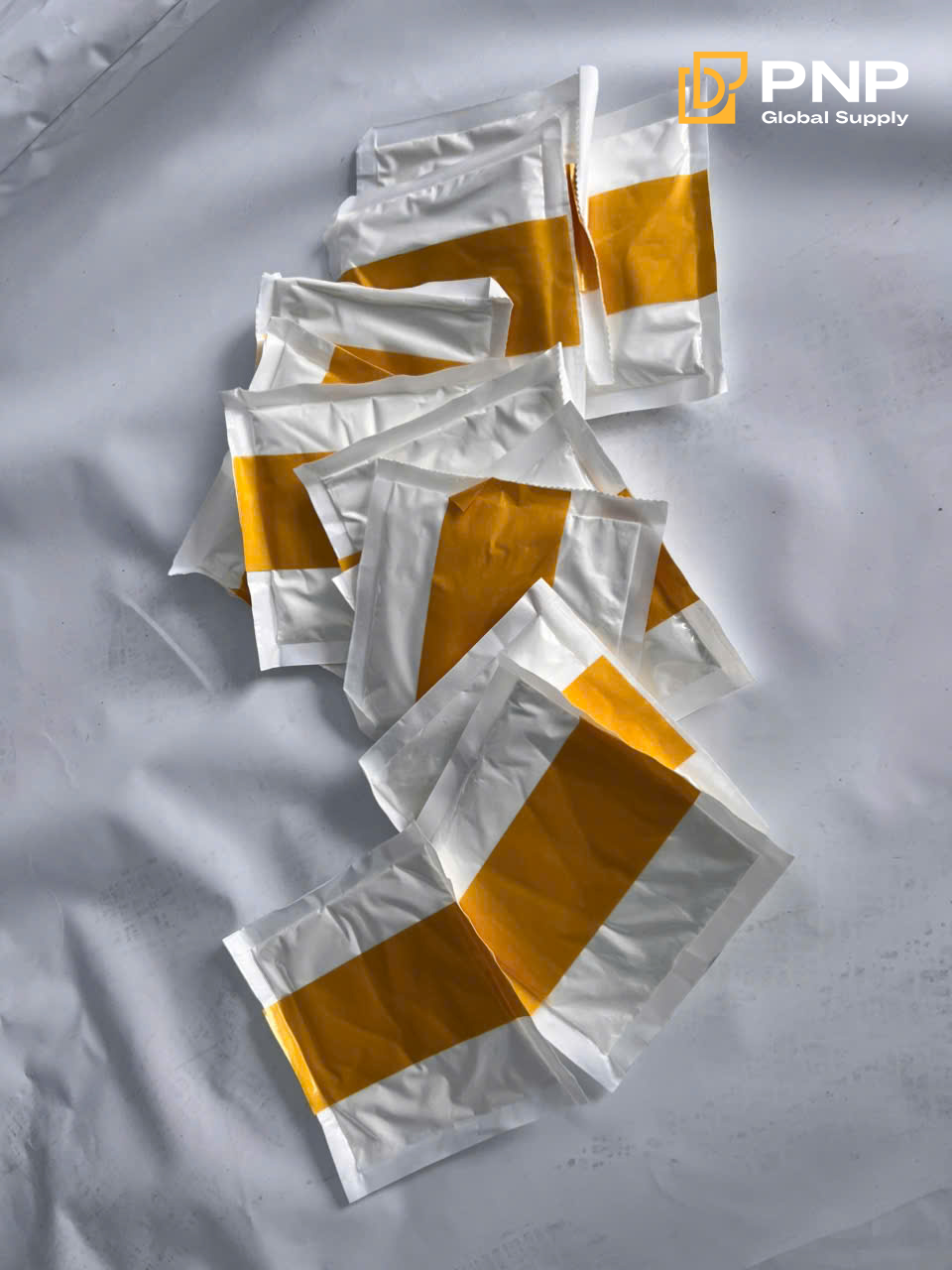
How Thermal Liners Enhance Safety in Charcoal Shipping
A well-installed thermal liner significantly reduces the likelihood of fire and product damage during shipping charcoal. Here’s how it makes a difference:
- Prevents temperature spikes: By reflecting heat and stabilizing internal conditions, liners help prevent self-heating.
- Protects against external factors: Whether under the blazing sun at port or in humid tropical weather, the liner shields charcoal from direct environmental exposure.
- Minimizes condensation: Moisture condensation inside a container is a leading cause of mold and spontaneous ignition. Thermal liners reduce this effect dramatically.
- Improves logistics efficiency: Liners keep cargo in better condition, which means fewer losses and complaints during charcoal delivery.
For long-distance routes — for example, shipments from Vietnam to the EU or the Middle East — container liners are a must-have to maintain consistent product quality and safety standards.
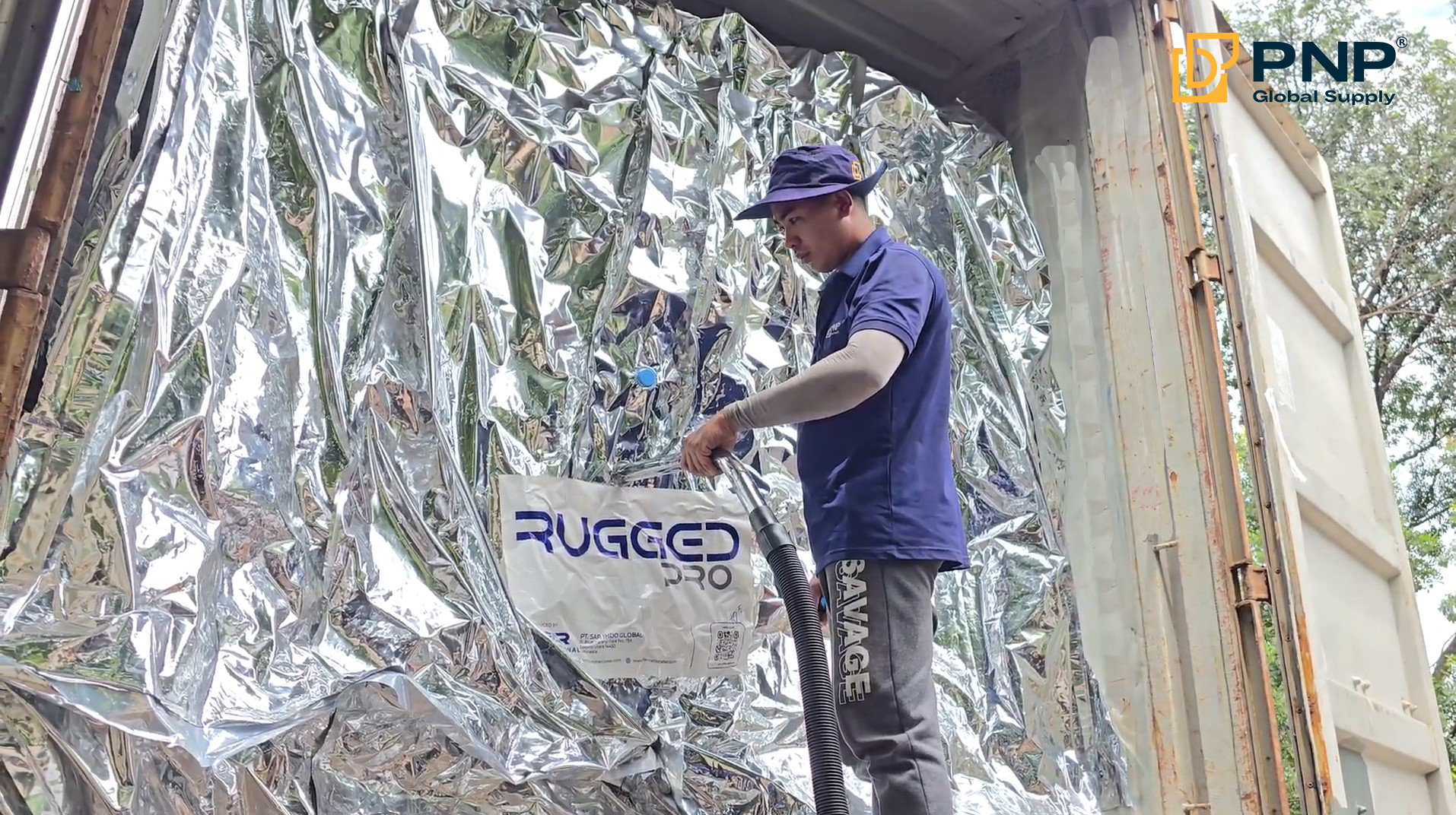
Compliance with Charcoal Shipping Regulations
Charcoal is classified under the United Nations Dangerous Goods List, typically as UN 1361 (Carbon, Animal or Vegetable Origin) or UN 3088 (Self-heating Solid, Organic, N.O.S.). These regulations require exporters to follow strict packaging, labeling, and documentation procedures to minimize risks during dangerous goods shipping.
Using thermal liners and moisture control systems supports compliance by:
- Demonstrating adherence to international charcoal shipping regulations.
- Reducing the likelihood of cargo rejection or delays at customs.
- Ensuring alignment with shipping lines’ safety policies for combustible goods.
By maintaining a safe environment inside the container, exporters also protect their brand reputation and reduce insurance risks associated with shipping charcoal.
Real-World Application in Charcoal Export
Many Vietnamese charcoal exporters have already adopted thermal liners and desiccant packs for bulk shipments. For instance, when exporting to Europe or the Middle East, containers are often exposed to high humidity at loading ports and extreme temperature changes during sea transport.
By lining the entire container with thermal insulation and adding desiccant bags along the walls and roof, exporters can maintain a balanced internal climate. This not only preserves the product’s quality but also minimizes claims due to damp or overheated cargo.
Such protection is particularly valuable when shipping high-grade BBQ charcoal, such as Mangrove, Coffee, or Eucalyptus charcoal, which must arrive in perfect condition for retail or restaurant use.
How to Properly Install Thermal Liners and Desiccants
To achieve maximum protection, both systems should be correctly installed:
- Step 1: Clean the container to remove dust and residue.
- Step 2: Install the thermal liner along the container walls, floor, and ceiling, sealing all gaps.
- Step 3: Place desiccant packs evenly across the liner — typically one pack per cubic meter or based on the cargo’s moisture sensitivity.
- Step 4: Load the charcoal in bulk or packed bags and close the liner before sealing the container.
Routine inspection before loading and after arrival ensures that the cargo remains in good condition and the liner performs as expected.
If you’re looking for high-quality charcoal products that are carefully packed with moisture protection and thermal liners, visit: PNP Charcoal for more details.
Cost and Benefits for Exporters
While adding thermal liners and moisture absorbers increases initial costs slightly, the long-term benefits far outweigh the investment:
- Reduced risk of fire or damage during charcoal ship operations.
- Fewer product losses and customer complaints.
- Extended storage time and improved shelf life.
- Easier compliance with international charcoal shipping regulations.
Overall, these measures enhance cargo safety, brand reliability, and customer satisfaction.
For importers seeking to optimize logistics expenses, learn more in our guide on: How to Reduce Charcoal Import Costs for Importers.
Conclusion
Charcoal is a valuable but sensitive product that requires careful handling during transportation. The use of thermal liners and desiccant packs is not just an added precaution — it’s a critical part of safe charcoal delivery. Together, they help regulate temperature, prevent moisture buildup, and comply with dangerous goods shipping standards.
For exporters and logistics companies, investing in reliable container liners and moisture control systems ensures that every shipment of charcoal in bulk arrives in perfect condition — dry, cool, and ready for use.
If your company is looking for safe and efficient ways to ship charcoal, consider integrating thermal liners into your packaging process. It’s a smart, sustainable solution for protecting your product and your reputation in the global charcoal market.
________________________________
Contact us for more information
Facebook: PNP Charcoal
Instagram: PNP Charcoal
Email: info@pnpglobalsupply.com

